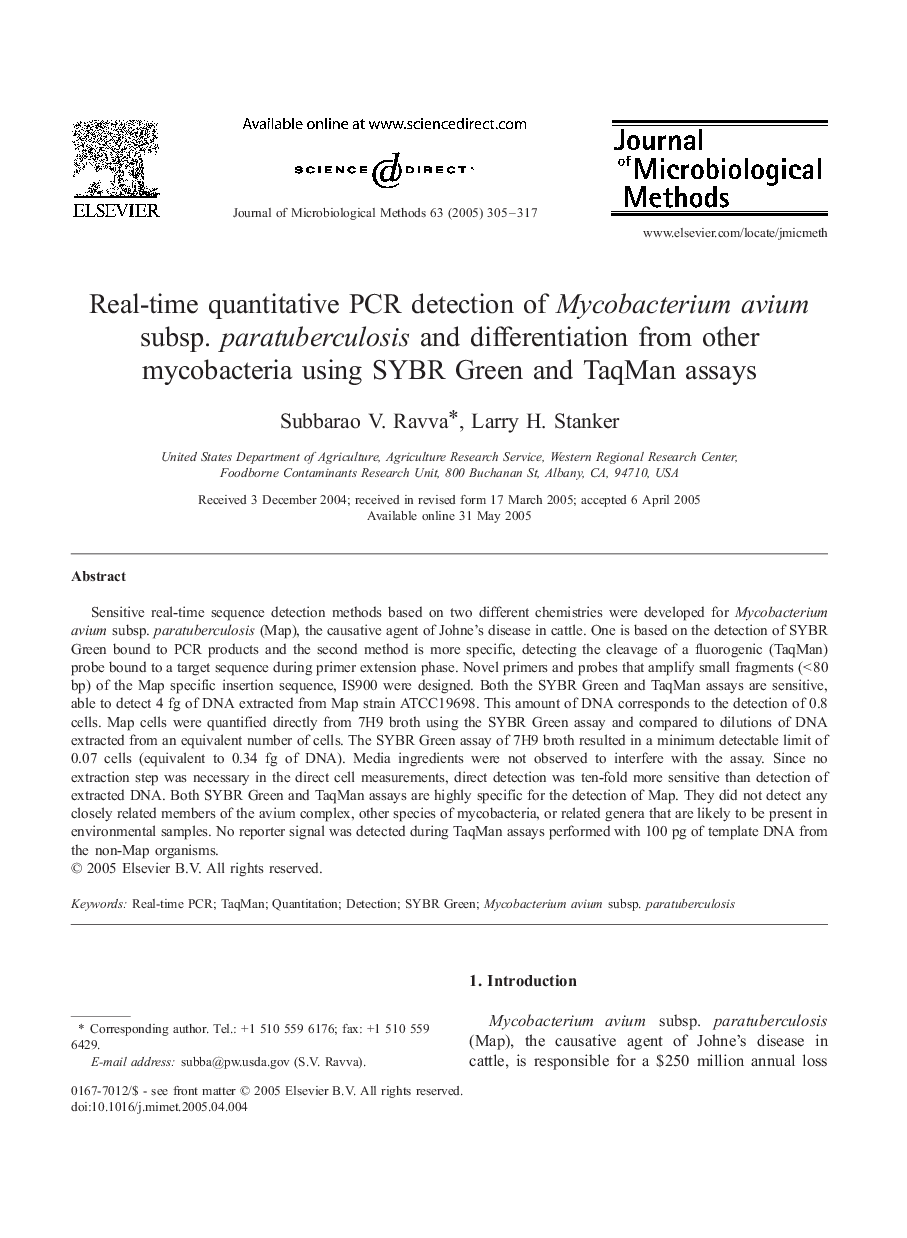| Article ID | Journal | Published Year | Pages | File Type |
|---|---|---|---|---|
| 10889861 | Journal of Microbiological Methods | 2005 | 13 Pages |
Abstract
Sensitive real-time sequence detection methods based on two different chemistries were developed for Mycobacterium avium subsp. paratuberculosis (Map), the causative agent of Johne's disease in cattle. One is based on the detection of SYBR Green bound to PCR products and the second method is more specific, detecting the cleavage of a fluorogenic (TaqMan) probe bound to a target sequence during primer extension phase. Novel primers and probes that amplify small fragments (<Â 80 bp) of the Map specific insertion sequence, IS900 were designed. Both the SYBR Green and TaqMan assays are sensitive, able to detect 4 fg of DNA extracted from Map strain ATCC19698. This amount of DNA corresponds to the detection of 0.8 cells. Map cells were quantified directly from 7H9 broth using the SYBR Green assay and compared to dilutions of DNA extracted from an equivalent number of cells. The SYBR Green assay of 7H9 broth resulted in a minimum detectable limit of 0.07 cells (equivalent to 0.34 fg of DNA). Media ingredients were not observed to interfere with the assay. Since no extraction step was necessary in the direct cell measurements, direct detection was ten-fold more sensitive than detection of extracted DNA. Both SYBR Green and TaqMan assays are highly specific for the detection of Map. They did not detect any closely related members of the avium complex, other species of mycobacteria, or related genera that are likely to be present in environmental samples. No reporter signal was detected during TaqMan assays performed with 100 pg of template DNA from the non-Map organisms.
Keywords
Related Topics
Life Sciences
Biochemistry, Genetics and Molecular Biology
Biotechnology
Authors
Subbarao V. Ravva, Larry H. Stanker,
